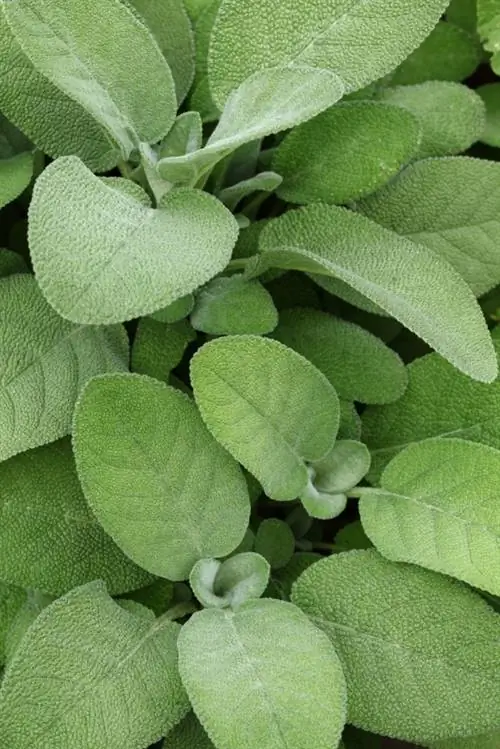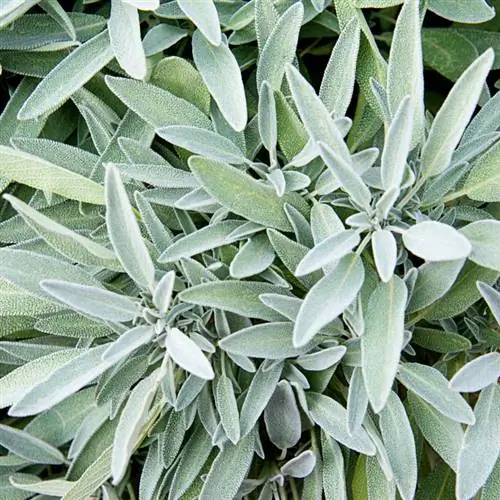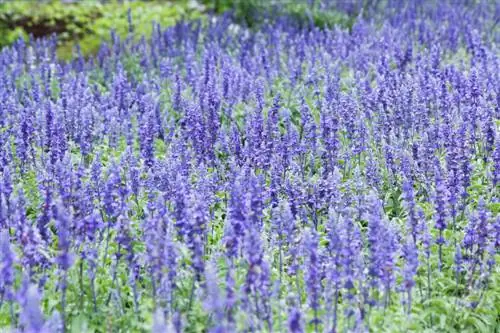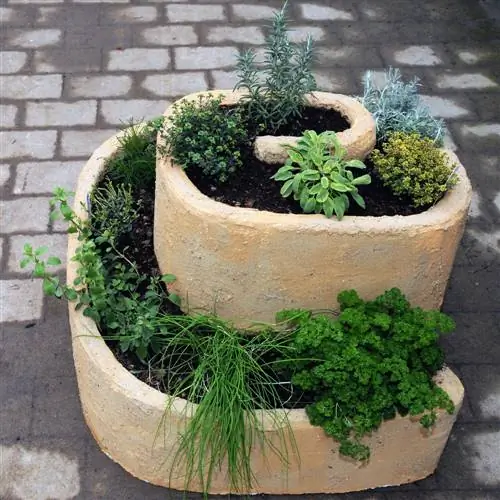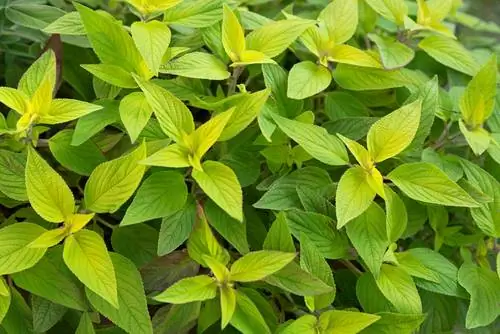- Author admin [email protected].
- Public 2023-12-16 16:46.
- Last modified 2025-01-23 11:20.
Sage has a reputation for being extremely modest when it comes to caring for it. This applies all the more the better the condition of the soil meets the requirements of the evergreen subshrub. The following overview provides all the important details.

Which soil properties does sage prefer?
The ideal sage soil consists of a mixture of loam, clay, sand and humus, is fine, crumbly, loose, airy, without waterlogging and has a moderate lime content. Soil improvement can be done by adding compost, sand, gravel or lime.
These properties characterize good sage soil
To understand the demands on the soil, a look at the natural distribution area of common sage provides more information. The popular herbal plant is native to the sun-drenched regions of the Mediterranean. Here it thrives on calcareous, moderately dry, sandy soils up to an altitude of 900 meters. Valuable conclusions can be drawn from this for the herb garden:
- A mixture of loam, clay, sand and humus is ideal
- A fine, crumbly soil, loose and airy
- No waterlogging in sight
- Preferably with a moderate lime content
So sage feels particularly at home in the rock garden or gravel bed, as long as there is a minimum amount of humus. Thanks to its decorative value, the evergreen subshrub is also ideal as a flowering perennial for planting on a south-facing slope or a sunny embankment.
Tips for improving soil
If the soil at the chosen location does not come close enough to the ideal condition, optimization using additives can be considered. First check the current status. If a handful of soil cannot be formed but falls apart, it is sandy soil. Clay soil, on the other hand, holds together as a ball. Clay takes on a shiny shimmer when rubbed.
- Maturate in soil that is too sandy, incorporate sifted compost
- Dig up heavy soil the previous year before the first frost
- Ice crystals break up the compactions as frost freeze
- Sowing a deep-rooted green manure in spring, such as lupins
- Mow the green manure in May and bury it as mulch
- Add additional sand or fine-grained gravel
Natural additives such as primary rock flour (€19.00 on Amazon), algae lime or AZ-Vitalkalk from specialist retailers ensure the desired lime content.
Tips & Tricks
Don't puzzle for long about the lime content of the soil in the sage bed. You can determine the specific value using an uncomplicated test set from the hardware store. A test strip uses a coloring reaction to indicate what you are dealing with. A pH value of 7 to 8 is considered excellent for sage.

